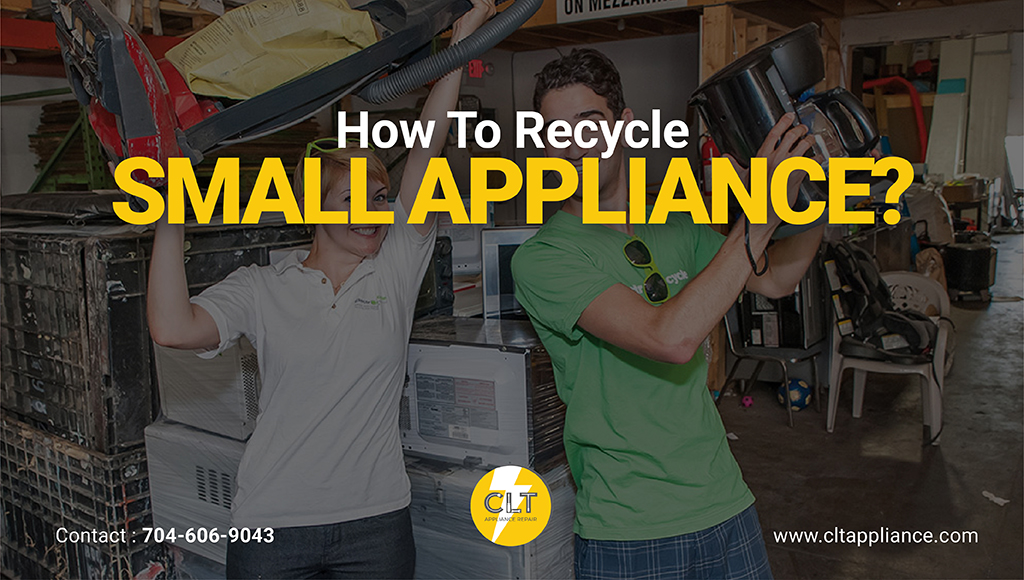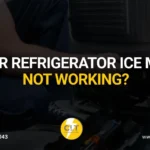Recycling small appliances plays a critical role in managing household waste and preserving environmental resources. As technology continues to evolve, homes are often filled with outdated or broken appliances, leaving many unsure about how to dispose of them responsibly. These items, though small in size, have a significant environmental impact when not handled correctly.
Improper disposal leads to growing landfill waste and prevents the recovery of materials that could be reused. With increasing awareness about sustainability, finding practical ways to recycle small appliances is more important than ever. From old toasters to hairdryers, every effort counts toward reducing waste and promoting eco-friendly practices.
Why Recycling Small Appliances Matters?
Small appliance recycling isn’t just about cleaning up clutter; it directly impacts the environment and resource conservation. Many of these appliances contain materials that, when discarded improperly, can harm ecosystems or go to waste instead of being repurposed.
Environmental Protection
Small appliances often contain hazardous materials like mercury, cadmium, and lead. When these items end up in landfills, the toxic components can seep into the soil or water supply, causing long-term contamination. Recycling prevents these harmful substances from entering the environment and ensures safe handling.
Resource Recovery
Recycling small electrical appliances can leave you with some extra helpful materials. They are built using metals, plastics, and glass that can be recovered and reused. Recycling helps extract these materials for use in manufacturing, reducing the need for virgin resources. This also decreases energy consumption and greenhouse gas emissions tied to mining and production processes.
Waste Reduction
With landfills nearing capacity, managing household waste efficiently has become a priority. Small appliance recycling reduces the volume of waste sent to landfills and supports a circular economy. By choosing recycling, households can make a measurable difference in reducing waste streams.
Types of Small Appliances for Recycling
Small appliances come in many forms, ranging from everyday kitchen gadgets to personal care devices. It’s pretty normal to question “Are small appliances recyclable?” Each type may require different recycling methods depending on the materials they are made of and the recycling facilities available. Understanding the range of items that fall into this category can help streamline the recycling process.
Kitchen Appliances
Items like toasters, blenders, coffee makers, and food processors are among the most commonly recycled. These appliances are often made from a combination of metals and plastics, which can be separated and processed for reuse.
Personal Care Appliances
Devices such as hairdryers, electric shavers, and curling irons are also recyclable. These items may contain small motors and electronic components that require proper dismantling at a recycling facility.
Cleaning Appliances
Small cleaning devices, including handheld vacuum cleaners and steam mops, can often be recycled. Some facilities accept these items as part of e-waste collection programs due to their electronic parts.
Miscellaneous Electronics
Other small electronic tools, such as soldering irons, battery chargers, and even mini fans, are considered recyclable when they are way past any help from Appliance Repair Charlotte NC. These items typically contain valuable metals like copper and aluminum that can be recovered during the recycling process.
Steps to Recycle Small Appliances
How to recycle small kitchen appliances? Recycling them requires a step-by-step approach to ensure the process is efficient and environmentally friendly. From assessing the appliance’s condition to finding the right recycling facility, following these steps can simplify the task.
Assess the Condition
Before recycling, check if the appliance is still functional.
- Working appliances: Consider donating to local charities, thrift stores, or community organizations.
- Non-functional appliances: These should be prepared for recycling or disposal.
Check Local Regulations
Recycling practices can vary widely based on location. Check with your local waste management authority or municipal recycling program to understand what kind of recycling small kitchen appliances are accepted in your area. Some municipalities offer curbside collection for small electronic waste (e-waste), while others may require drop-off at designated facilities.
Remove Hazardous or Non-Recyclable Components
Certain parts of small appliances may need to be handled separately.
- Batteries: Remove any rechargeable or disposable batteries. Many areas have specific recycling programs for these.
- Hazardous materials: Items like refrigerants in mini-fridges or oils in certain appliances require specialized handling.
Locate a Recycling Facility
Now the most important part: where to recycle small kitchen appliances? Find a recycling center near you that accepts small appliances.
- Use resources like Earth911 or local directories to identify facilities.
- Retailers often run take-back programs, allowing you to drop off old appliances when purchasing new ones.
The Recycling Process
Once your small appliance reaches a recycling facility, it goes through several stages to ensure safe and efficient processing. Each step plays a critical role in reducing waste and recovering valuable materials.
Collection
Recycling facilities collect appliances through various channels:
- Curbside pickups: In areas where e-waste collection services are available.
- Drop-off centers: Individuals bring their appliances directly to designated locations.
Sorting
At the facility, appliances are sorted based on:
- Type of appliance: kitchen, personal care, or cleaning appliances etc.
- Material composition: metals, plastics, and glass.
Disassembly
Recyclers manually disassemble the appliances to separate components.
- Hazardous materials, such as batteries and refrigerants, are safely removed.
- Valuable components, such as motors and circuit boards, are extracted for reuse.
Processing
The remaining materials are processed for further separation:
- Shredding: Appliances are broken into smaller pieces.
- Mechanical separation: Techniques like magnetic separation are used to sort metals from plastics.
Material Recovery
Recovered materials are sent to manufacturers for reuse:
- Metals: Recycled to create new appliances or other products.
- Plastics and glass: Repurposed into new materials for various industries.
This streamlined process ensures that the maximum amount of material is recovered while minimizing waste.
Takeaway
Recycling small appliances is a simple yet impactful way to contribute to environmental sustainability. By following the steps to assess, prepare, and recycle these items, you help reduce landfill waste, conserve valuable resources, and prevent harmful materials from polluting the environment. Responsible recycling is not just about disposal. It’s about making conscious choices that benefit both your household and the planet.
CLT Appliance Repair is your trusted partner for keeping your appliances in top condition. From dryer repair to washing machine repair, we ensure quick and reliable service in Charlotte, NC. Don’t throw away your small appliances. Let us repair them and extend their lifespan.
Read More: How To Install A Double Oven?
Author

- John Bennett
- John Bennett is a seasoned appliance repair specialist at CLT Appliance Repair, where he brings over a decade of technical expertise and a strong commitment to customer satisfaction. With a background in electrical and mechanical systems, John has built a reputation for reliable, efficient, and honest repair services across a wide range of household appliances-including refrigerators, washing machines, ovens, and more.







